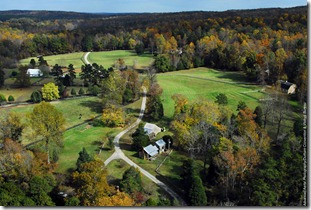The amount of money allocated for urban forestry by elected officials in Durham NC, where I live, is sufficient to plant, nurture and maintain 350-400 trees per year, only if residents and volunteers contribute additional treasure and sweat.
That’s only a little more than the number of trees needed each and every day just to replace the number of trees our community loses to development in order to sustain the economic, public health and environmental benefits a tree canopy yields to a community.
To put this into further perspective, New York City, which has roughly the same land area as Durham County (304.8 vs. 290 square miles not including water surface,) including the Borough of Queens which covers approximately the same land area as the City of Durham (109.2 vs 94.6 sm,) plants 8,000 trees a year, 2,000 street trees alone.
Durham makes the mistake many communities do when it limits urban forestry to just those on City-owned or maintained property such as parks and right-of-ways. Places such as New York understand that urban forest management includes a community’s entire tree canopy.
Waiting for the next public budget hearings to get Durham on track will be much too late. Priorities are being established with the City management right now and they have customarily resulted in targets for each department and division that focus on being the same or lower than the previous year.
If you are like me, you hope that elected officials and administrators are looking strategically at the needs of the community, using “best practices” and scientific studies as aids to help develop a budget to meet those needs and communicate it to the general public.
But in reality, their limited resources are fully absorbed by the task of figuring out how to divide up the pie and juggle priorities.
This is how our street maintenance got so far behind that we had to pass bonds to catch up. Streets aren’t the only type of infrastructure – gray, brown and green – that was allowed to degrade and it would have been far less expensive to incrementally maintain each and every year.
So many services in Durham have fallen so far below “best practice” that people have forgotten what those benchmarks are or have settled into the routine of just cutting or adding a certain percentage. So something such as urban forest management doesn’t even come up for review as a resource or infrastructure to maintain, only a cost.
Following an in-depth urban forest resource analysis in 2007, New York City set a goal of planting a million trees during the current decade or in other words to increase its tree canopy of 5.2 million trees by 20%. They have already reached 612,000 trees and counting.
Per year that breaks down into planting approximately 20,000 additional or replacement street trees, 30,000 trees planted by residents or private partners, 48,000 trees planted by Parks, Storm Water and other agencies as well as reforestation required by zoning regulations.
The NYC goals also focus on biodiversity and native species, not just the number of trees planted. I am sure it includes a heart to heart with big box nurseries and residents about what constitutes native and the size trees must be able to reach to truly generate economic, health and environmental return.
Durham’s vaunted street tree canopies that contribute so much to the sense-of-place and property values in its historic neighborhoods are aging out. People who take these lush canopies for granted need only peruse photos taken before 1930 to see how Spartan the community once looked.
Here is my first pass at some of the facts Durham needs to consider in setting its own goals for urban forestation:
- County-wide, Durham has 11.2 million trees in its urban forest. Net those that may have naturally regenerated, we’ve surrendered 1 million trees to impervious surface in the last 30 years or so.
- Part of any urban forestry goal for Durham should be to gradually replace the million trees lost during those years – replanting, nurturing and maintaining, for example, 91 trees a day over the next 30 years.
- Based on forecasts, net those trees that will naturally regenerate, Durham also needs to plant or incentivize the replanting of 152 trees per day to replace those that are forecast to be surrendered to additional development or impervious surface over the next 30 years.
- A zero-loss strategy then would be to reforest 243 trees a day (88,695 per year) through a variety of means including ordinance requirements, incentives to residents and other private property owners and by public agencies such as storm water, parks, public works, public health, urban forestry etc.
- Remember, I am suggesting that this be phased over 30 years, not trying to duplicate the ambitious goal of a million trees in a decade that was set in NYC, and it nets out those trees that may naturally regenerate and even the nurturing of those could be incentivized.
- This should all begin with an an urban forest resource assessment and valuation of the entire City and County, similar to the one NYC commissioned.
I am sure there are other ways to calibrate a goal for reforestation of Durham. I’ll happily share the metrics behind the goals shown in this blog, but another approach could be to index the amount reinvested in reforestation or afforestation to the proven dollar benefits of overall urban tree canopy, such as those so thoroughly documented for NYC.
One thing is for certain, yielding annual benefits worth $2.3 billion, Durham’s tree canopy is a resource well worth managing to its fullest potential.
No comments:
Post a Comment